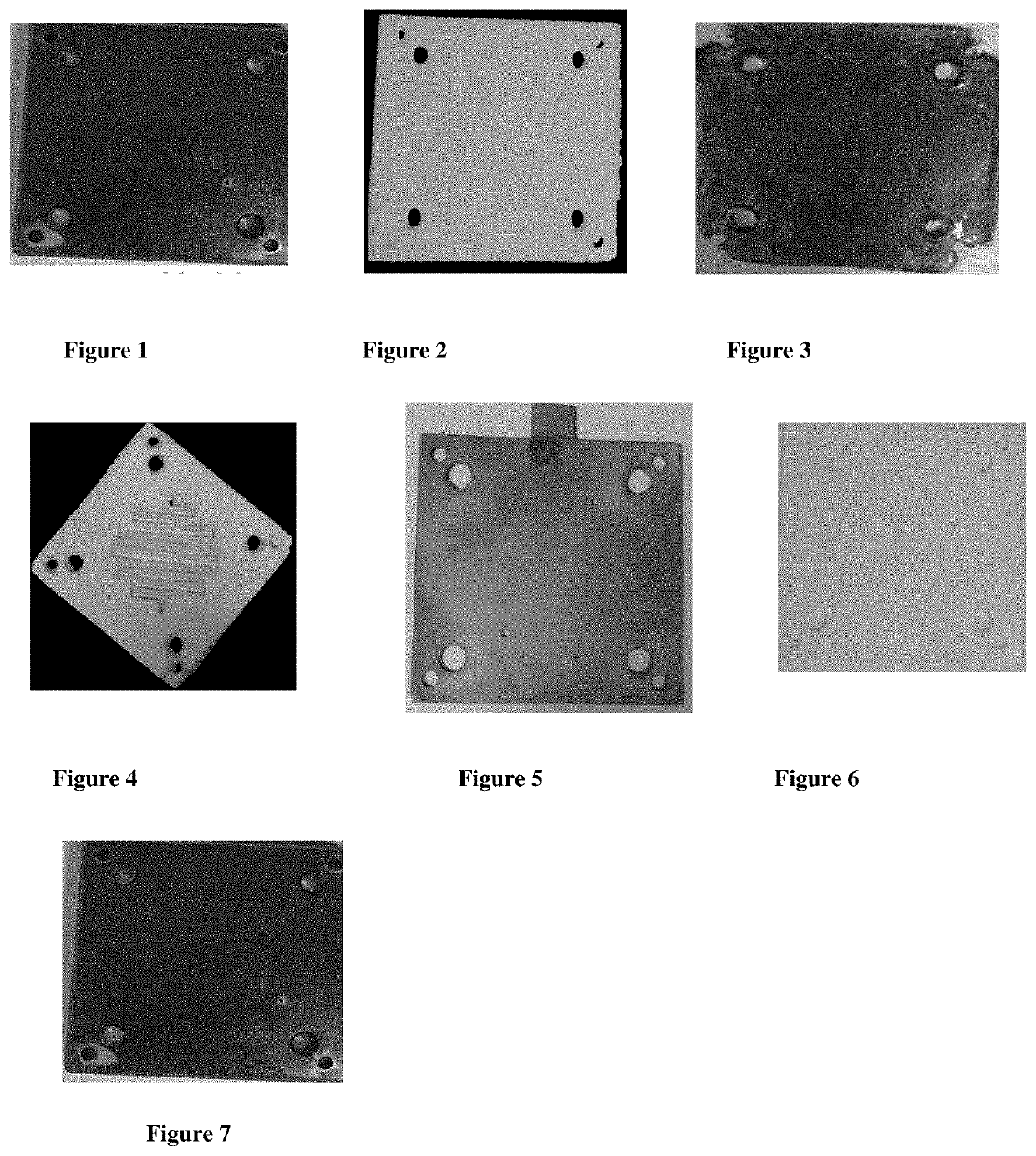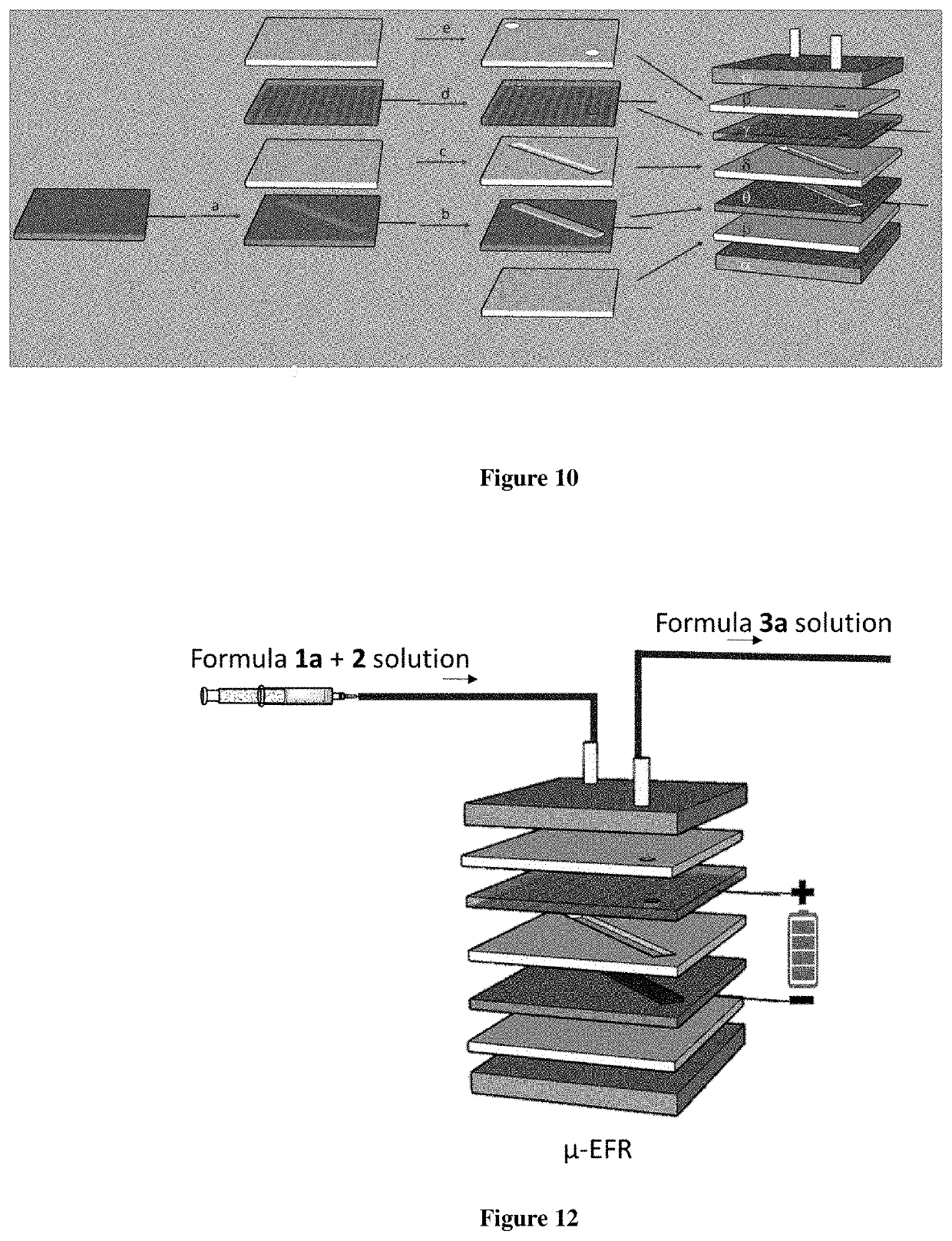Micro-electrolysis reactor for ultra fast, oxidant free, c-c coupling reaction and synthesis of daclatasvir analogs thereof
a micro-electrolysis reactor and synthesis technology, applied in the field of micro-electrolysis reactors for ultra-fast, oxidant free, c-c coupling reaction and synthesis of daclatasvir analogs thereof, can solve the problems of inability to automate, long reaction time to complete the reaction with off quality,
- Summary
- Abstract
- Description
- Claims
- Application Information
AI Technical Summary
Benefits of technology
Problems solved by technology
Method used
Image
Examples
example 1
Synthesis of Biphenyl (3a)
[0105]
[0106]A μ-EFR (Graphite cathode and Pt@Ni@Cu anode, height=1000 μm, length=10 cm, width=2 mm, reactor volume 200 μl, total electrode contacts surface area 400 mm2) was assembled and joined to the other components of the continuous flow system to ensure efficient mixing and high surface to volume ratio. The stock solution containing a mixture of bromobenzene (1a) (0.025 g, 0.015 mmol,) and NiCl2.glyme (0.003 g, 10 mol %), 2,2′-bipyridine (1.9 mg, 10 mol %), LiCl (24 mg, 0.06 mmol) in 1 mL of DMA was passed through the pre-designed μ-EFR, keeping 4 min. residence time and 4 mA constant current. Finally, out-flowing product mixture was quenched and solvent exchange was done from DMA: water to low boiling solvent diethyl ether by adding aq. NaCl solution. Extracted waste water layer was further extracted with diethyl ether and analyzed by LC-MS, which showed no traces of product and was again confirmed by absence of the corresponding peaks in crude NMR an...
example 2
Synthesis of 4,4′-dimethyl-1,1′-biphenyl (3b)
[0111]
[0112]Compound of formula (3b) was synthesised following the procedure described above under Example 1 and general procedure involving corresponding reactants of formula (1b). The crude material was purified by silica gel column chromatography (100% PE) to provide a white solid (12.43 mg, 91%); melting point: 118° C.; The spectra data matched with values reported in the literature (Angew. Chem. Int. Ed. 53, 3475-3479 (2014).
[0113]1H NMR (400 MHz, CDCl3) δ 7.47 (d, J=7.9, 4H), 7.22 (d, J=7.8, 4H), 2.38 (s, 6H).
[0114]13C NMR (101 MHz, CDCL3) δ 138.26, 136.66, 129.41, 126.78, 21.06.
[0115]IR (νmax): 3020, 2924, 2856, 1495, 1106, 1026, 801, 706 cm−1;
[0116]MS (EI): found: 182 (M+).
example 3
Synthesis of 3, 3′-dimethyl-1,1′-biphenyl (3c)
[0117]
[0118]Compound of formula (3c) was synthesised following the procedure described above under Example 1 and general procedure involving corresponding reactants of formula (1c). The crude material was purified by silica gel column chromatography (100% PE) to provide a white solid (10.37 mg, 76%); Melting point: 150° C.; The spectra data matched with values reported in the literature (J. Org. Chem. 79, 2733-2738 (2014).
[0119]1H NMR (400 MHz, CDCl3) δ1H NMR (400 MHz, CDCl3) δ 7.40-7.28 (m, 4H), 7.23 (t, J=7.5 Hz, 2H), 7.06 (t, J=13.2 Hz, 2H), 2.33 (s, 6H). 13C NMR (101 MHz, CDCL3) δ 141.33, 138.21, 128.57, 127.95, 127.88, 124.26, 21.52.
[0120]IR (νmax): 3021, 2924, 1600, 1472, 1216, 758, 708, 66. cm−1;
[0121]MS (EI): found: 182 (M+).
PUM
| Property | Measurement | Unit |
|---|---|---|
| Temperature | aaaaa | aaaaa |
| Temperature | aaaaa | aaaaa |
| Temperature | aaaaa | aaaaa |
Abstract
Description
Claims
Application Information
 Login to View More
Login to View More - R&D
- Intellectual Property
- Life Sciences
- Materials
- Tech Scout
- Unparalleled Data Quality
- Higher Quality Content
- 60% Fewer Hallucinations
Browse by: Latest US Patents, China's latest patents, Technical Efficacy Thesaurus, Application Domain, Technology Topic, Popular Technical Reports.
© 2025 PatSnap. All rights reserved.Legal|Privacy policy|Modern Slavery Act Transparency Statement|Sitemap|About US| Contact US: help@patsnap.com



